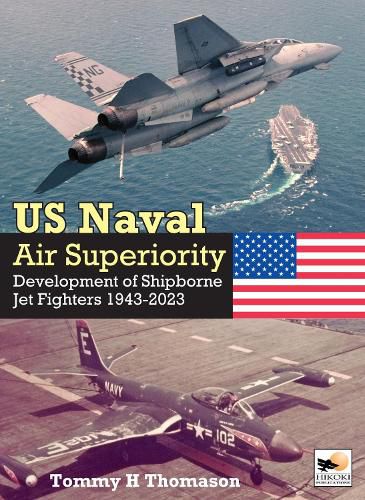Readings Newsletter
Become a Readings Member to make your shopping experience even easier.
Sign in or sign up for free!
You’re not far away from qualifying for FREE standard shipping within Australia
You’ve qualified for FREE standard shipping within Australia
The cart is loading…






The combat superiority of the jet fighter as demonstrated towards the end of World War II presented the U.S. Navy with a significant problem. Carrier-based aircraft have additional and burdensome design requirements compared to those that do not have to fly on and off carriers. Through experience and innovative design by their aircraft suppliers, the Navy were flying propeller driven fighters that were in no way operationally inferior to their land-based adversaries. Now they had to do it again with a higher degree of difficulty - the innate limitations of jet propulsion could not have been more incompatible with safe and routine carrier-based operation. This is a new and expanded edition of a book which examines the US Navy's internal struggle to adapt the jet engine to its style of warfare, as well as the development and evolution of carrier-borne fighters, their airframes and engines, from the closing days of World War II through to the 1990s. The book profiles the turbulent design and development stage of the Navy's carrier-based jet fighter programme. From the successful designs - such as the Fury, Banshee, Crusader, and Phantom II, to the also-rans, like the Fireball, Demon, Pirate, and Cutlass - the Navy's needs are measured against contractor and political demands and the limits of the evolving engine and aerodynamic technologies of the day. The successful transition to high-performance, carrier-based jet fighters wasn't just accomplished by the airplane and engine manufacturers. Timely and thoughtful innovations in aircraft carrier design, operational procedures, training and equipment were also necessary. The previous edition had taken the story up to 1962. Substantial additions to this edition include new chapters on the F6D/F-111B, F-14A/B/C/D and F-18A/B/C/D. Significant events post 1993 are also covered including the retirement of the F-14 and "legacy" F-18, the introduction of the F-18E/F, F-35C and unmanned aerial refuelling programmes. This book includes many photos and illustrations including engine cut-aways, aircraft comparison diagrams and details of the safety improvements made to aircraft carriers to enable higher speed and high-gross-weight jet operations.
$9.00 standard shipping within Australia
FREE standard shipping within Australia for orders over $100.00
Express & International shipping calculated at checkout
Stock availability can be subject to change without notice. We recommend calling the shop or contacting our online team to check availability of low stock items. Please see our Shopping Online page for more details.
The combat superiority of the jet fighter as demonstrated towards the end of World War II presented the U.S. Navy with a significant problem. Carrier-based aircraft have additional and burdensome design requirements compared to those that do not have to fly on and off carriers. Through experience and innovative design by their aircraft suppliers, the Navy were flying propeller driven fighters that were in no way operationally inferior to their land-based adversaries. Now they had to do it again with a higher degree of difficulty - the innate limitations of jet propulsion could not have been more incompatible with safe and routine carrier-based operation. This is a new and expanded edition of a book which examines the US Navy's internal struggle to adapt the jet engine to its style of warfare, as well as the development and evolution of carrier-borne fighters, their airframes and engines, from the closing days of World War II through to the 1990s. The book profiles the turbulent design and development stage of the Navy's carrier-based jet fighter programme. From the successful designs - such as the Fury, Banshee, Crusader, and Phantom II, to the also-rans, like the Fireball, Demon, Pirate, and Cutlass - the Navy's needs are measured against contractor and political demands and the limits of the evolving engine and aerodynamic technologies of the day. The successful transition to high-performance, carrier-based jet fighters wasn't just accomplished by the airplane and engine manufacturers. Timely and thoughtful innovations in aircraft carrier design, operational procedures, training and equipment were also necessary. The previous edition had taken the story up to 1962. Substantial additions to this edition include new chapters on the F6D/F-111B, F-14A/B/C/D and F-18A/B/C/D. Significant events post 1993 are also covered including the retirement of the F-14 and "legacy" F-18, the introduction of the F-18E/F, F-35C and unmanned aerial refuelling programmes. This book includes many photos and illustrations including engine cut-aways, aircraft comparison diagrams and details of the safety improvements made to aircraft carriers to enable higher speed and high-gross-weight jet operations.